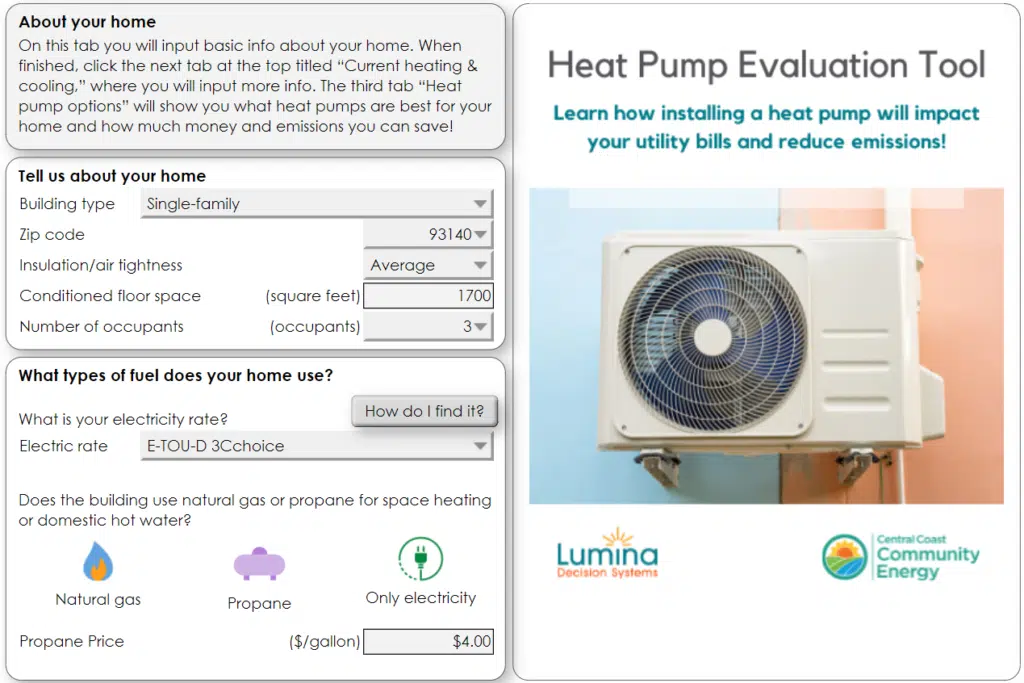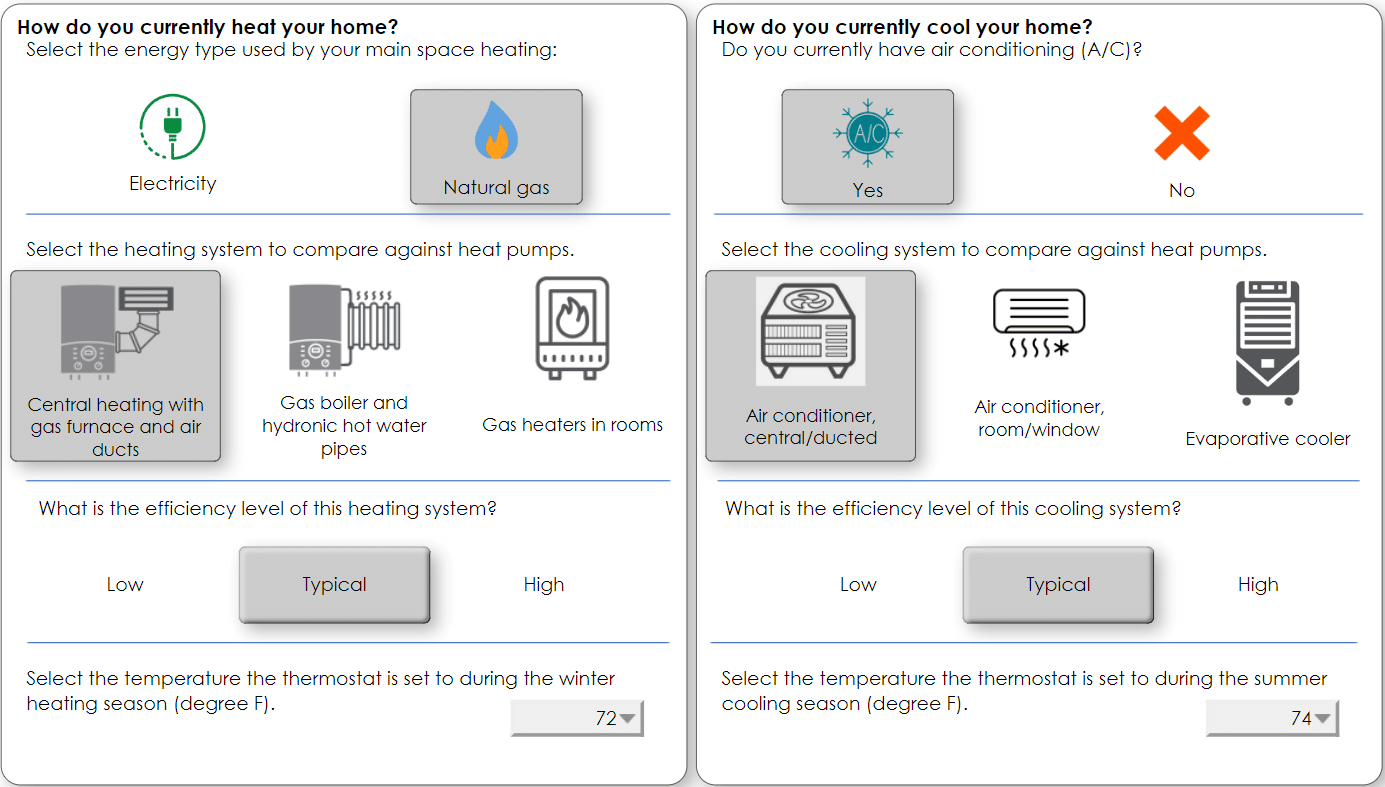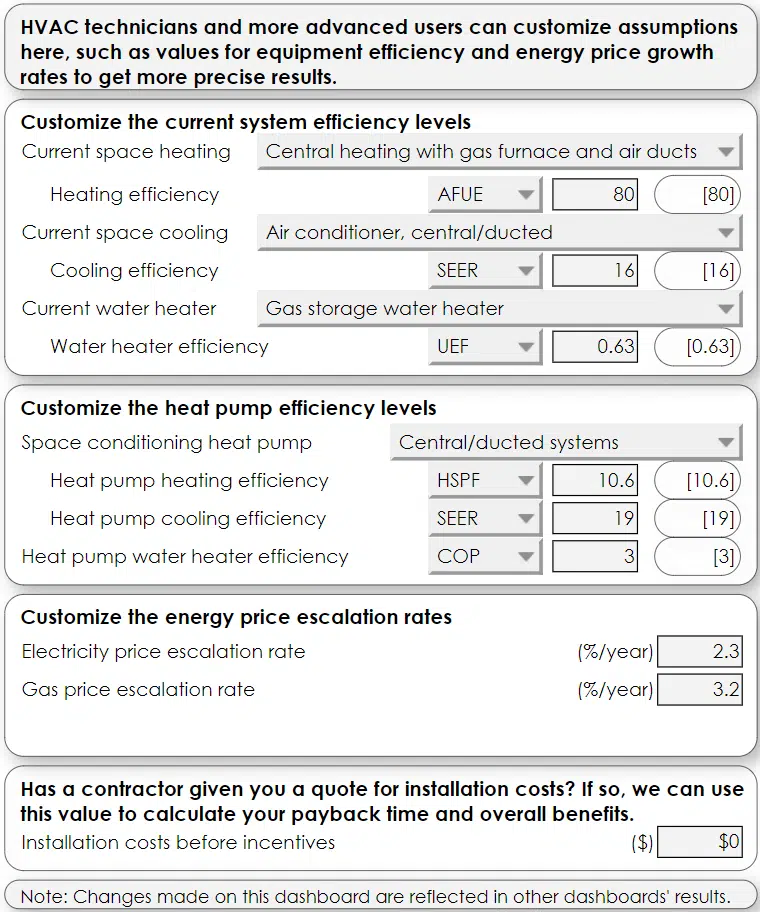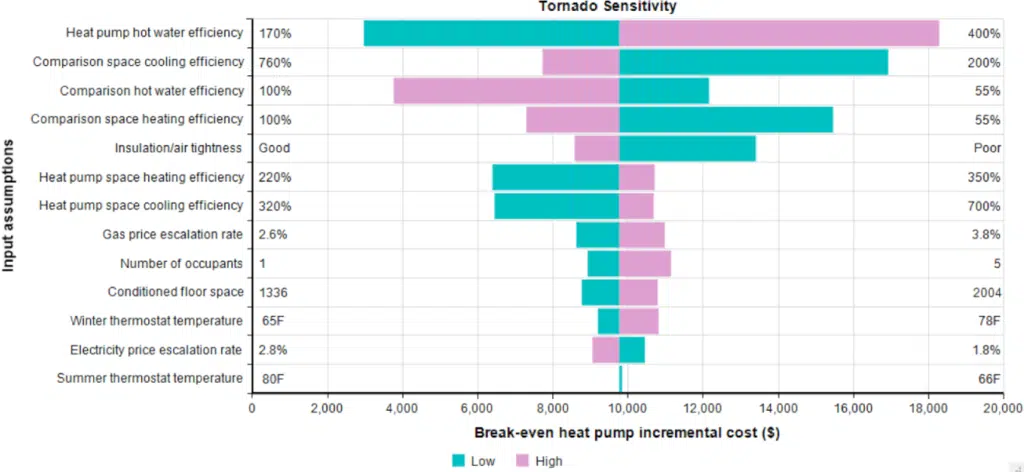The first online tool designed to capture the full value of replacing conventional technologies with heat pumps for California homes.

The challenge
Despite these advantages, the market penetration of heat pumps has been slow in the US. This contrasts with Japan, for example, where 90% of buildings and homes use heat pumps for domestic hot water and space heating. A major reason is that these advantages are still poorly understood by many HVAC contractors, let alone homeowners and facility managers of commercial buildings. The low penetration of heat pumps in many US regions, means that most HVAC contractors have limited experience in updating systems, making it hard to find knowledgeable contractors to do the work. Few HVAC contractors provide reliable and comprehensible estimates on the value and relative economics on heat pumps.
The few existing “heat pump calculators” available ignore the importance of electric and gas rate complexities (e.g. time-of-use or tiered rates) and address only a limited set of equipment types and configurations.
That’s why Lumina, with support from Central Coast Community Energy, set out to build a more useful tool to assess the benefits of heat pumps.
Why Analytica?
Accurate cost-benefit analysis of replacing conventional technologies with heat pumps is challenging. Heat pumps’ efficiency varies with outdoor air temperatures. Thus, estimation of energy use must address not just heating degree days (HDD) and cooling degree days (CDD) by location, but also heating and cooling profiles by time of day and season. Proper evaluation with time-of-use pricing also requires hourly energy consumption profiles. Demand charges and tiered pricing requires modeling other electricity loads as well. Analytica’s ability to deal with multi-dimensionality and large arrays is ideal for performing utility bill analysis across hours within months and years within a heat pump’s lifetime. This analysis includes all gas, propane and electric loads within a home, and for multiple locations and equipment types for a comprehensive assessment.
The Analytica Cloud Platform makes the tool easily accessible in the cloud. Users can use the model from an internet browser without downloading any software. Moreover, the user interfaces can be quickly built in an Analytica model itself, eliminating the need for application integration between a calculation engine and a web-based user interface. Publishing an Analytica model to the cloud merely requires several button clicks. Figures below shows our user interface and a subset of results of the heat pump evaluation tool.



The solution
Analytica is an effective tool for easily identifying key sensitivities and trade-offs in the model, something that is usually a difficult task in many modeling languages. The tornado diagram in Fig 4 shows the results of sensitivity of the break-even installation costs for a heat pump to changes in key model assumptions. The width of each bar shows how much changing each parameter from low to high affects the result. The labels on each side of the bar shows the ranges for the assumption.

Customer
Lumina received funding through the Central Coast Community Energy (CCCE) Electrification Education Grant Program to further building electrification for CCCE customers by accelerating adoption of electric heat pumps for water and space heating.

Authors
The developers of the Heat Pump Evaluation Tool are James Milford, Hadi Eshraghi and Krista Myers of Lumina.
For more
For more information, head to https://helpelectrify.com/.
Please contact our consulting team at solutions@lumina.com for more details about this application or learn about our consulting services here.
Webinars
- Heat pumps 101: heating and cooling your home while saving money and reducing emissions.
- Inner workings of the heat pump calculator
- Navigating the heat pump landscape: helping consumers, utilities and cities make economic decisions




